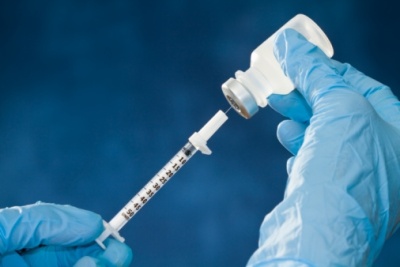Methods of Aeroallergen Immunotherapy: Proven, Unproven, and Everything in Between
 Allergen immunotherapy is a treatment for allergies that has been around for over a century. There are thousands of studies showing its effectiveness. Patients who experience bothersome nose, eye, skin, or respiratory symptoms related to allergen exposure may benefit from this treatment. The treatment involves repeatedly exposing the patient to their allergens over an extended period, often 3 to 5 years. After a full immunotherapy treatment course, the majority of allergy sufferers experience resolution of bothersome allergy symptoms. They are also often able to discontinue use of other medication for their allergies.
Allergen immunotherapy is a treatment for allergies that has been around for over a century. There are thousands of studies showing its effectiveness. Patients who experience bothersome nose, eye, skin, or respiratory symptoms related to allergen exposure may benefit from this treatment. The treatment involves repeatedly exposing the patient to their allergens over an extended period, often 3 to 5 years. After a full immunotherapy treatment course, the majority of allergy sufferers experience resolution of bothersome allergy symptoms. They are also often able to discontinue use of other medication for their allergies.
Researchers have studied different ways to administer the allergen. The longest known form of allergy immunotherapy is traditional “allergy shots”, which is also known as subcuteanous immunotherapy (SCIT). It is an FDA-approved method of immunotherapy, using high-dose allergen extracts, administered as an injection. Allergy shots are administered in a doctor’s office. Allergists use liquid allergens to compound (or mix) patient-specific treatment vials used in allergy shots. Allergen extracts are sterile liquid forms of natural substances like pollens, mold, and animal dander. Some extracts have a standardized method of determining their strength or potency. Other extracts are considered non-standardized. Dosing should be high enough to induce an immune response. Typical dosing schedules start with frequent doses, known as “build-up”, so the patient gets used to the allergen, followed by spacing out the doses to monthly maintenance intervals. This step of moving from frequent to less frequent dosing is an important part of building long-term, lasting immune changes.
Frequent dosing and medical office administration can make SCIT inconvenient for some people with allergies, and in some parts of the world FDA-approved immunotherapy treatments are not easily accessible.
Sublingual immunotherapy (SLIT) is the most well-studied method of treating allergies. Treatments are done at home with under-the-tongue tablets or drops. The allergen is taken every day for several years. SLIT tablets are FDA-approved for treating nose and eye symptoms related to grass pollen, ragweed pollen, and dust mite. Tablets can be purchased at a retail pharmacy with a prescription from your allergist. SLIT drops can be compounded for individual treatment using extracts approved for SCIT. This is considered off-label use of approved extracts. SLIT drop dosing is determined by the prescribing doctor. With this method, ensuring high enough dosing is important for adequate immune stimulation. Some health practitioners offer “low-dose” SLIT, which may not provide long-term symptom relief.
Intralymphatic immunotherapy (ILIT) is a newer way of administering the allergen by ultrasound guided lymph node injection. ILIT uses a low-dose, three-injection protocol that can be completed in 8 weeks. Research over the last decade shows these injections to be effective for treating certain allergies. Like SLIT drops, ILIT injections are done with off-label use of allergen extracts approved for SCIT.
Continued research in immunotherapy for convenient, safe treatment options is ongoing. Allergen-containing toothpastes (oral mucosal immunotherapy), nose sprays (intranasal immunotherapy), and patches (epicutaneous immunotherapy) have been looked at for treating respiratory allergens and remain in an exploratory phase. Novelty allergen-containing lollipops are not considered allergy immunotherapy. They do not have a body of research showing effectiveness for reducing allergy symptoms, and should be cautioned due to unknown allergen content in these products.
Having treatment options is important for meeting individual’s needs. Sometimes too many options can be overwhelming. When considering allergy immunotherapy, lean on the expertise of your local allergist to make a shared decision about which type of allergy immunotherapy may be best for you.
12/27/2023